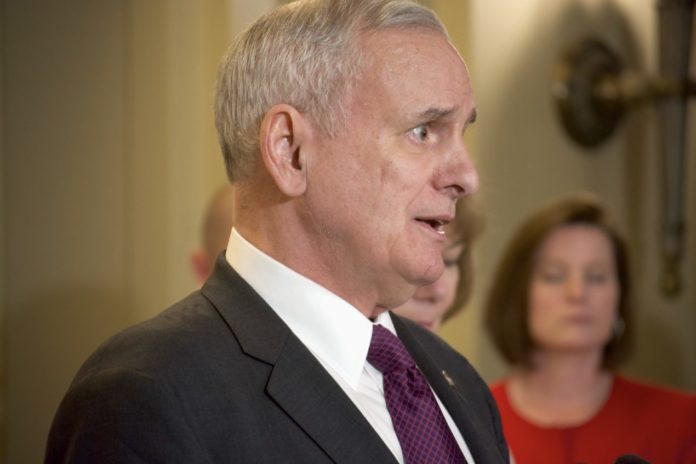ST. PAUL, Minn.- The Minnesota Supreme Court delivered a decision on September 8, 2017 which effectively makes Gov. Mark Dayton’s line item veto of the legislature’s budget constitutional.
The court cited directly that the Minnesota constitution, Article IV, Section 23 explicitly states that the executive has the power to veto “one or more” of “several items of appropriation of money.” Supporting the findings of the district court, which found “the Governor vetoed items of appropriated funds that were dedicated to a specific purpose.” However, a major point of disagreement between the district court and the Minnesota Supreme Court was on the matter of whether or not it was appropriate for the judicial branch to intervene in matters of funding/appropriations, a power which under the constitution is reserved to the legislative and executive branch. With that said, the Minnesota Supreme Court does not seem to have overruled the injunctive relief granted by the district court to the legislature.
Recognizing that it does not hold specific powers when it comes to intervening on matters of appropriations the court has ordered the following actions to be taken. The court is requiring that the Minnesota executive and legislature engage in “good-faith efforts to resolve the dispute through mediation.” The executive and legislative branches are required to inform the court by Tuesday, September 12, of which mediator they have chosen. If they have not decided by this time, the court will appoint a mediator for them. The court also demands a progress report on the mediation be filed to the court on September 30, indicating when mediation would be resolved between the two branches.
Due to the gap in the constitutionality of the judicial branch being involved in the appropriations, the executive and legislative branch will be compelled to issue informal memoranda to the court on September 15, detailing the “constitutionality of the Judicial Branch ordering funding to the Legislature after June 30, 2017.” The memoranda will also detail, “potential judicial remedies, if any, for the vindication of the people’s constitutional right to three independent, functioning branches of government, and discuss any separation of powers concerns raised thereby.” It limits these replies to 25 pages.
Finally, the court demands that the parties file a joint statement by September 15, which includes “updated calculations on the amount of carryover funds available to the Minnesota House of Representatives and the amount of carryover funds available to the Minnesota State Senate as of July 1 and as of September 1, 2017.” It will also include when these funds will be exhausted by.
The decision by the Supreme Court was unanimous, though Justice David Stras (R), had recused himself from the trial. By coming to the decision that it did, the Minnesota Supreme Court essentially holds that the issue of appropriation is a political issue that the judicial branch should not intervene in, despite many decisions by the Ramsey County district court which has inserted itself into funding questions during the government shutdown in 2011 and 2005.
“I am very pleased that my constitutional right to line-item veto certain appropriations for the Minnesota House and Senate…was upheld by the Minnesota Supreme Court,” Dayton said to the Pioneer Press.
Following the end of oral arguments on August 28, Senate Majority Leader Paul Gazelka said, “If (the court) rules in the governor’s favor he has more power than ever before.”

















